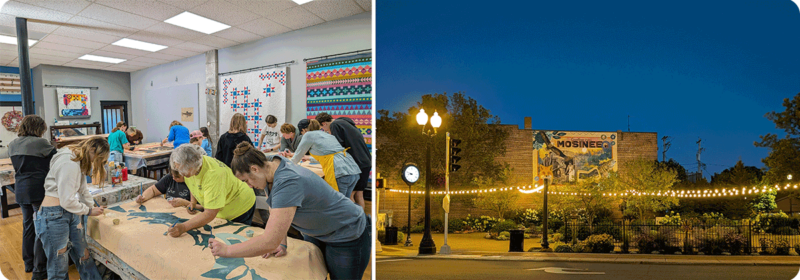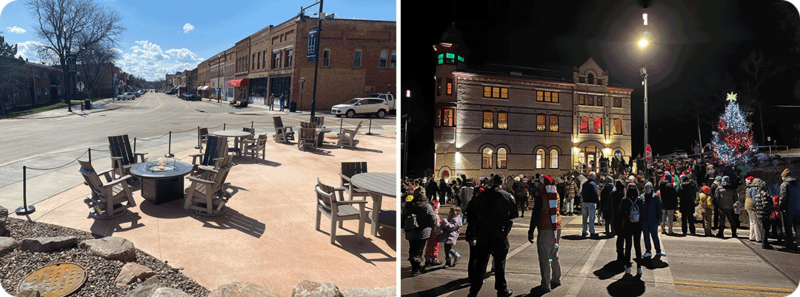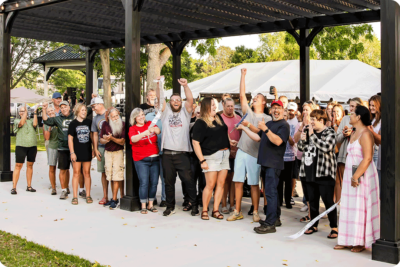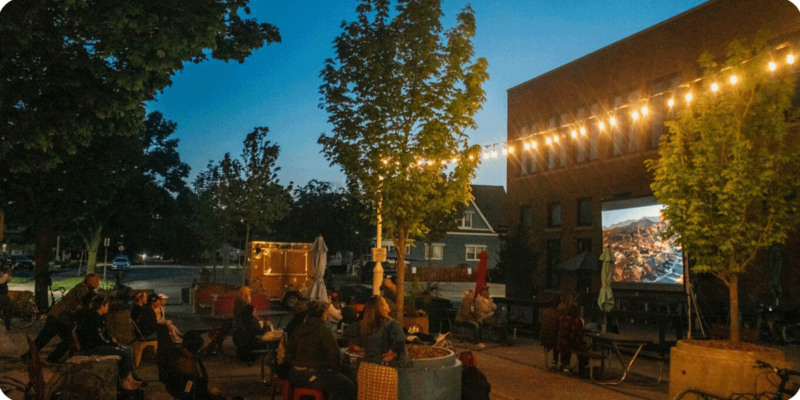
Sheboygan’s Uptown Parklet creates new opportunities for the community to come together.
In 2023, WEDC launched the Vibrant Spaces Grant as a pilot program to provide matching funds to communities looking to implement placemaking projects. Communities were asked to submit projects that would create public spaces to enhance the community as an attractive place to live, increase foot traffic to nearby businesses, and promote community gatherings. The program was well-received, attracting nearly 90 applications. The 34 projects that were ultimately funded represented a broad cross-section of the state, including all geographic areas, with half of the projects located in rural communities of fewer than 10,000 residents. The Vibrant Spaces Grant is returning in 2024, offering additional municipalities the opportunity to pursue improvements to vacant or underutilized spaces in the heart of their communities. Read more about the specifics of this year’s grant program. For additional inspiration, this month’s newsletter highlights successful projects from the first year of grants.
The Vibrant Spaces pilot was specifically designed to accommodate true placemaking initiatives and embrace the “lighter, quicker, cheaper” ethos of making incremental changes to improve a space and respond to community feedback. To accomplish this, the grant provided for a one-to-one project match up to $50,000, with no preference given to project size, although identified and secured sources of match funding did boost an applicant’s score. The total budget for the 34 awarded projects ranged from $43,752 for an enhanced farmers market plaza in downtown Gilman to $1.6 million for a completely revamped Central Park West Plaza in downtown Two Rivers. The median project size was just under $150,000.
Projects were also evaluated based on the degree to which they demonstrated community partnerships and support for the project. Many awardees used the opportunity created by the grant to realize a long-term community goal. For example, Monroe is installing public restrooms on the courthouse square, a community need first identified in a newspaper article from 1888. Not only will the corner pocket park (a formerly overgrown planter bed) include restrooms, but it will also feature seating, shade, and a bicycle repair station to attract riders on the nearby Cheese Country Trail. Other communities took advantage of a chance to bring multiple civic groups together in pursuit of a common goal, often creating something even larger than originally envisioned. The original plan to transform a donated piece of land adjacent to the Chamber of Commerce in Elkhorn into a relaxing space featuring local art evolved into a project three times as large as envisioned with assistance from four civic organizations helping to plan and fundraise for various elements. The resulting Welcome Center Plaza features a sculpture garden, water feature, public garden space, and tranquil seating area as a welcoming gateway to downtown Elkhorn.
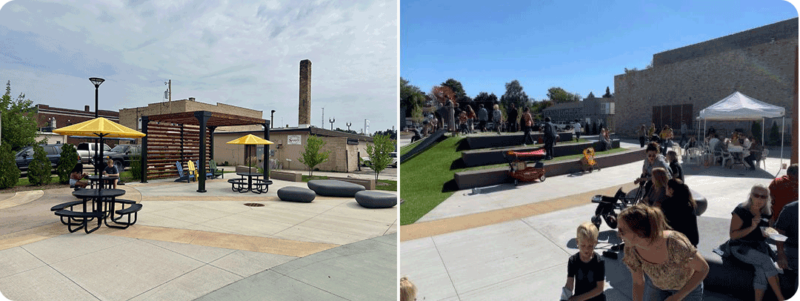
Shawano created an accessible plaza offering something for everyone. Seating, shade, restrooms, elevated seating, grassy areas and natural play elements provide relaxation and fun for the whole family.
Applicants were also rewarded for developing plans that created flexible and programmable spaces that would attract a wide variety of user groups and activities to commercial districts. Renovated spaces funded in the pilot round included a wide variety of space types including alleys (14%), underutilized parks (35%), vacant lots (27%), and parking lots or underutilized plazas (24%). Common elements in plans included not only traditional public improvements such as landscaping (62%), increased accessibility (47%), and expanded electrical and utility infrastructure (38%), but also additional seating and tables (56%), pedestrian-scaled lighting (26%), public art (21%), bike facilities/trail connections (18%), restrooms and programmable structures such as stages, and gantries and pergolas (50%), as well as elements to engage the public such as fire pits, games, sound systems, and numerous other creative installations (24%). As a result, the completed Vibrant Spaces projects are as diverse as the communities proposing them, with each community responding to local needs and interests in their space design.
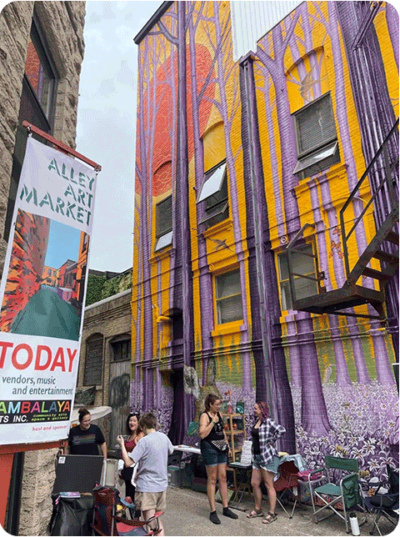
A formerly dark and dingy alley in Oshkosh is now bright and colorful, not to mention its new use as an event space.
By being highly visible, walkable to nearby businesses, and featuring flexible design and (frequently) moveable elements, vibrant spaces serve as a visual indicator of community vitality, encouraging pedestrian activity adjacent to local businesses, and allowing for the space to grow and evolve along with the surrounding area. Well-located spaces can serve as a gateway to the business district, providing a visual signal that the district is worth stopping by. In several communities, Vibrant Spaces projects are located immediately adjacent to a visitor center or chamber of commerce, increasing the likelihood that a visitor to the space will learn more about local businesses and destinations. In others, the availability of electrical outlets, public wifi, and shaded seating areas has resulted in employees and students enjoying the space as a prime location to get work done. Other business districts have taken advantage of the opportunity to add outdoor tables and umbrellas, creating outside dining opportunities where on-street space was previously limited. Providing additional seating increases the number of customers restaurants can serve, and the visible presence of outdoor diners creates the perception of downtown as a popular dining destination, further boosting business.

